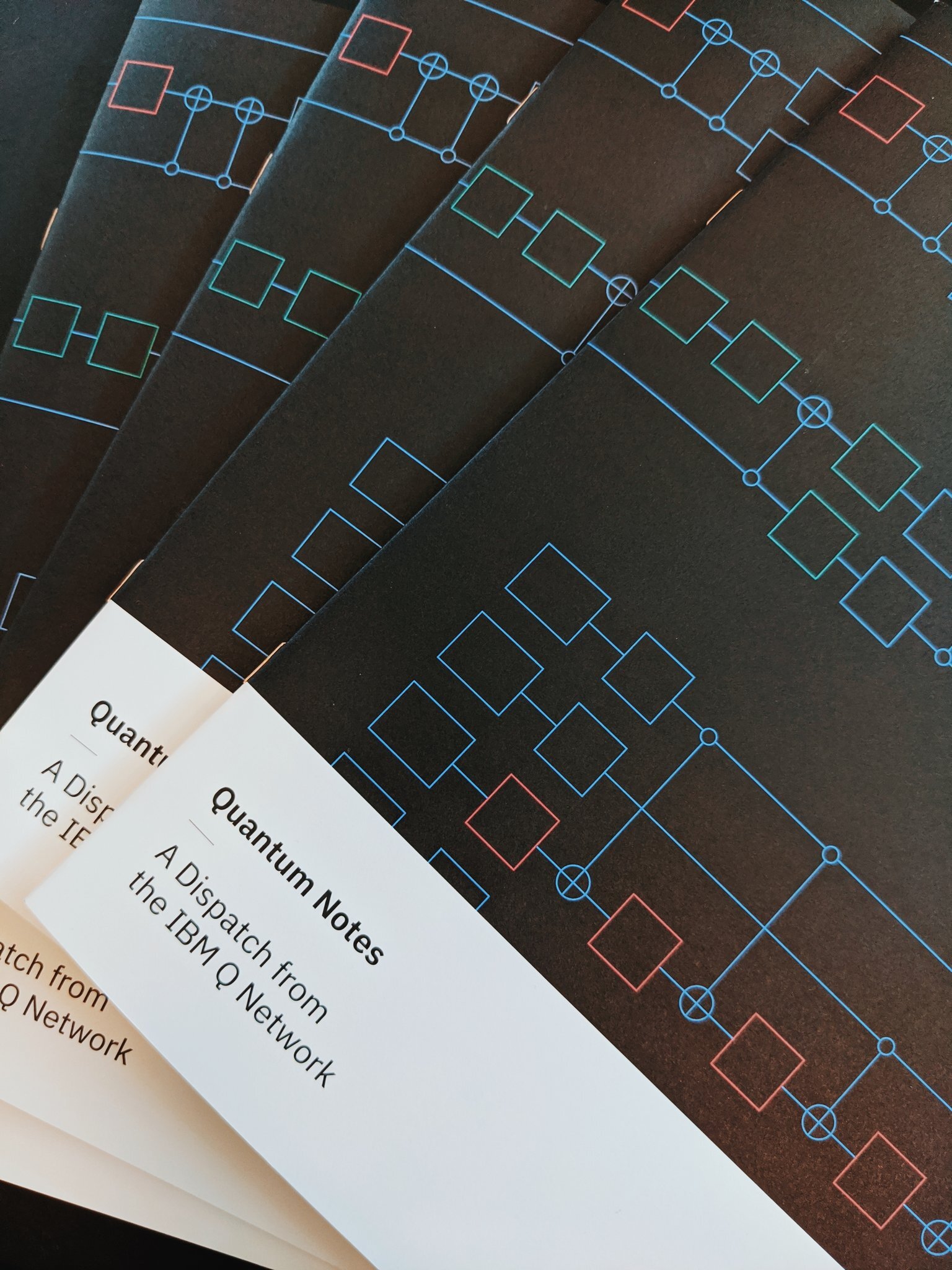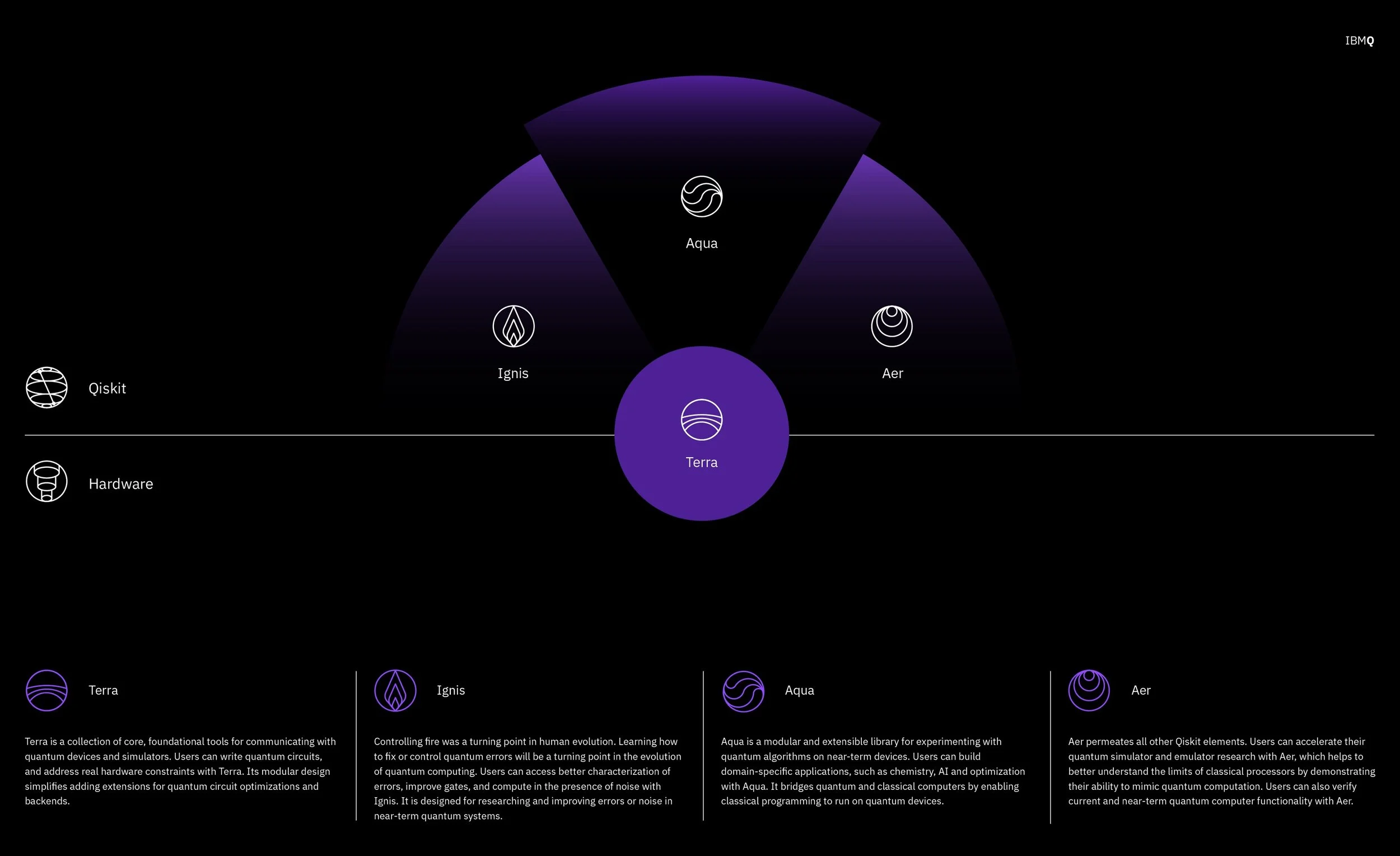This past week, I attended the NYC Quantum Summit in the New Lab co-working space at Brooklyn, which is a full-day event that explores the potential impact of future state quantum computing technologies. In addition to interactive demonstrations of quantum hardware and principles, the event also featured speakers and startups at the forefront of quantum computing research, as well as insights from leaders of industries that will define how these technologies can solve our most pressing challenges.
In this post, I would like to share several key takeaways that I got out of attending this summit.
1 — Keynote
The event started out with a keynote presentation led by Anthony Annunziata and Jerry Chow from IBM. Jerry is the manager of the Experimental Quantum Computing team and Anthony is the global lead for quantum computing partnerships and ecosystem.
The presentation walked over the origins of quantum information science, which came from Rolf Landauer and Charles Bennett who attempted to answer the question: “Is there a fundamental limit to the energy efficiency for computation?” Then they discussed IBM’s long-term vision of building a universal fault-tolerant quantum computing technology that takes advantage of a few approaches such as molecular structure and material science simulations, integer factoring, Grover search, and semi-definite programming. The end goal is to move towards a quantum advantage, which is predicted to be between 2020–2050s.
Jerry introduced the Qiskit, an open-source quantum computing software development framework for leveraging today’s quantum processors in research, education, and business. The framework has 4 different offerings:
Terra is a set of tools for composing quantum programs at the level of circuits and pulses, optimizing them for the constraints of a particular physical quantum processor, and managing the batched execution of experiments on remote-access backends.
Aer provides a high-performance simulator framework for the Qiskit software stack.
Aqua contains a library of cross-domain quantum algorithms upon which applications for near-term quantum computing can be built.
Ignis is a framework for understanding and mitigating noise in quantum circuits and systems.
The growth of quantum computing tech is fast, given the increasing number of quits, gates set, connectivity, and system errors. According to Anthony, the IBM Q Network’s mission is to accelerate quantum research, develop commercial applications, and educate & prepare future quantum leaders. Several near-term applications, he argued, include simulating quantum systems (quantum chemistry, material science, applied physics), artificial intelligence (fraud detection, pattern recognition), and optimization & Monte-Carlo search (risk analysis, portfolio optimization, loan-credit risk).
The keynote ended with a quick look at the opportunity and challenge. The big opportunity is that quantum computing is still in the formative stage, especially in the New York City area. The main challenge is how to bring people together, especially buy-in from the government.
2 — Education For Tomorrow’s Quantum Workforce
This fireside panel is moderated by Abraham Asfaw (IBM) and includes Moin Qureshi (Georgia Tech), Javad Shabani (NYU) and Andrew Houck (Princeton). Abraham is the global leader of Quantum Education at IBM Q and a developer advocate for the Qiskit software. Moin is a professor of Electrical and Computer Engineering at the GA Tech with research interests in computer architecture, memory systems, hardware security, and quantum computing. Javad is an assistant professor of Physics at NYU whose expertise lies in quantum materials and devices for computations technologies. Andrew is a professor of Electrical Engineering at Princeton, whose research lies in quantum computing, non-linear and quantum optics, superconducting microwave electronics, and transport physics.
Here are the big takeaways that I got out from this chat:
Quantum computing skills lie between physics and mathematics. The industry needs people who are good at all levels of abstraction — from building the qubit hardware to developing new algorithms — in order to build economically sustainable quantum computing products.
Quantum computing education will move beyond a single course towards somewhat like a minor for undergrad students. At the graduate level, there will be specific courses at the application level, for example, quantum finance.
There exists a variety of initiatives to educate tomorrow’s quantum workforce: the joint IBM-Princeton research program that combines academic research in quantum science and engineering at Princeton with industry experience at IBM Q in Yorktown Heights, the offering of Georgia Tech’s online course “Intro to quantum computing”, more revenue to publish quantum research, as well as summer camp for teachers and professionals to learn quantum skills.
3 — The Role of Government in New York’s Quantum Future
This fireside panel is moderated by Mark Ritter (IBM) and includes Steve Johns (AFRL), Maria Gotsch (Partnership Fund of NYC), Jim Misewich (Brookhaven National Laboratory) and Matt Watson (Empire State Development). Mark has been working at IBM for more than 33 years and is currently the chair of the physical sciences council. Steve is the branch chief of the Air Force Research Lab in the areas of software assurance, computer processor designs, and quantum info sciences. Maria is the President and CEO at the Partnership Fund for New York City, the investment arm of the Partnership for NYC, in which she spearheaded the creation and operation of a number of the Fund’s strategic initiatives. Jim is the chair of Brookhaven’s Condensed Matter Physics and Materials Science department, in which he developed new research programs focusing on the synthesis of high-quality materials and new materials, the high-precision characterization of the physical properties of these materials, and the theoretical understanding of them. Matt is the Senior VP & Executive Director for the Science, Tech, and Innovation Division of the Empire State Development.
Most of this chat surrounds the recent passing of the National Quantum Initiative Act by the White House under the Office of Science and Tech Policy. The act calls for the development of a multi-year strategic plan to help keep America at the forefront of the quantum revolution. One important aim of the plan will be to create new research centers that bring together academics from different disciplines, such as computer science, physics, and engineering, to help conduct experiments and train future quantum researchers. It will also encourage large companies and startups to pool some of their knowledge and resources in joint research efforts with government institutes.
4 — Quantum Computing for Risk Analysis and Capital Markets
This fireside panel is moderated by Katie Pizzolato (IBM) and includes Nikitas Stamatopoulos (JP Morgan Chase), Jeremy Glick (Goldman Sachs), and Stefan Woerner (IBM). Katie is the global client lead for the IBM Q Network, where she supported the industry, academic and hub partners in their engagement with IBM. Nikitas is currently running quantitative research in quantum computing at JP Morgan. Jeremy is the global head of R&D engineering at Goldman Sachs. Stefan is the global leader in quantum finance and optimization for IBM Research based out of Zurich.
Here are the big takeaways that I got out from this chat:
Financial services are very open about research and development work in quantum computing: from open-source paper and software to partnerships with other organizations. This is because there is a lot of work to accomplish in this space.
This is an interesting problem for banks because many quantitative researchers come from the physics background.
Monte Carlo simulation is being deployed widely at banks, and so quantum computing would really help for this type of problem with similar order of magnitude. The goal is to really understand the fundamentals and test its limitations on real hardware.
“You don’t need to know quantum physics in order to do quantum computing.”
To deal with regulation in finance, there needs to be a transparent level of understanding at all departments. Also, there is a distinguishing difference between different applications of quantum finance, based on the type of data and hardware usage.
5 — State-Of-The-Industry Talks
The first talk is from Jennifer Glick, currently a Quantum Computing Applications Researcher at IBM. She talked about a recent IBM research paper that uses machine learning and quantum computing techniques together. The method uses two binary classifiers that process data provided classically with quantum-enhanced feature spaces. Traditionally, this problem can be solved with Support Vector Machines, which uses maximum margin to find the hyperplane. However, the data, in this case, are not linearly separable, so they want to use the feature map to increase dimensionality. They use quantum computing to evaluate the kernel matrix of SVM in quantum-enhanced feature space by computing vector distances. In order to actually construct the feature map, they use a Variational Quantum Classifier to encode the data, optimize a classification circuitry, and then assign labels to the circuits.
The second talk is from Stefan Woerner, a global leader in quantum finance and optimization for IBM Research based out of Zurich. He discussed 3 broad applications of quantum computing in the financial services industry. First is the classification problem, for example, predict an acceptable rating according to an investment strategy. Second is the pricing and risk analysis problem, for example, use Monte Carlo simulation to estimate the expected value and value at risk. Third is the combinatorial optimization problem, which is popular in asset and portfolio management. All of these problems can be solved with quantum computing, and he suggested to look into Qiskit Finance tutorials.
The third talk is from Jeannette Garcia, Senior Manager for Quantum Applications, Algorithms, and Theory team at IBM Research. Her team’s research focuses on computational science applications and theory for quantum computing. She brought up the idea of quantum-enabled chemistry, with potential impacts on the environment and energy, chemical petroleum, and healthcare & life sciences. Classical algorithms to design chemical atoms only scale exponentially, while quantum algorithms can scale polynomially with size. In particular, her team did a project on molecule modeling with the Variational Quantum Eigensolver using the Qiskit Aqua toolkit for Chemistry.
Conclusion
I had a ton of fun meeting and learning from decision-makers and technical leaders during the Quantum Summit. More importantly, the event exposed me to the types of business and education in quantum computing that I am unfamiliar with. I look forward to sharing more this type of content about emerging technologies in future blog posts.




